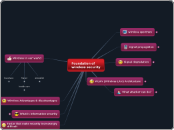af nursyafeera azeera 12 år siden
1020
wireless Network security
Information security is a multi-layered approach involving products, people, and procedures. This framework ensures the protection of devices that store, manipulate, and transmit data.

af nursyafeera azeera 12 år siden
1020

Mere som dette